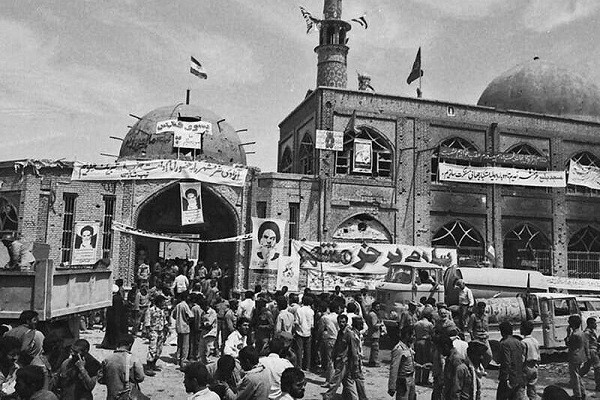The Beit al-Maqdis operation for the liberation of Khoramshahr
TEHRAN (Defapress) - The great Beit al-Maqdis operation began after the victory of Fath al-Mobin Fath al-Mobin. After that victory, many forces were prepared and army and IRGC divisions were sent to the designated areas.

This operation started on April 30, 1982, in the southern fronts (south of Ahvaz and north of Khorramshahr) in a part of about 5400 square kilometers and in several stages and ended on May 24, 1982. The most important goal of this operation was to liberate Khorramshahr from the Baath regime.
The operational area included the southwest of Ahvaz and the west of Karun, which was surrounded by four natural barriers: from the north, it leads to the Karkheh River, from the south to the Arvand River, from the east to the Karun River, and from the west to Hor Al-Huwayza and Shatt al-Arab.
The aims of this operation were: Destruction of aggressor forces; liberation of Khorramshahr due to its strategic and political importance; threatening Basra to force Iraqi Baath to pay war damages; taking away the cities of Susangerd, Huwayza, Hamid Barracks and Ahvaz-Abadan road from the range of the enemy's artillery; liberation Ahvaz-Khorramshahr road.
The zealous commanders of Islam, after several meetings, considered the best way to cross the Karun River, because the enemy never imagined that Iranian forces could cross the Karun River.
In this way, the enemies were surprised and victory was achieved. The operation plan was prepared and the central headquarters of Karbala assumed its command. Then it was established that the three camps of Quds, Fath, and Nasr will implement the program.
It was supposed that the Quds camp attacked the aggressors and made them busy in the region's north (Karkheh River). Then, the forces of Fath camp, in the middle area of the operation, passed through the Karun River and reached the Ahvaz-Khorramshahr road, which is 15-20 kilometers away from the river, and they were stationed behind that road to resist in case of an enemy attack. The lowest area of the operation was where Nasr's camp came into action. The forces of this base had to cross the Karun River and were fighting the enemy to liberate Khorramshahr and reach the international borders.
This operation was at a time when the aggressors thought that Iranian government would be overthrown by defeating in the operations of the fall and winter of the 1980. It took all the enemies of the regime by surprise and finally caused the aggressor forces to leave Iran in disgrace to protect Basrah.
At the end of this battle, in addition to ending the 19-month occupation of a part of the most sensitive areas of Khuzestan and liberating Khorramshahr, a heavy blow was inflicted on the combat power and morale of the Baath regime forces. During the liberation of Khorramshahr, about 16,000 Baath regime forces were killed and wounded, and 19,000 forces were captured by Iranian forces.
